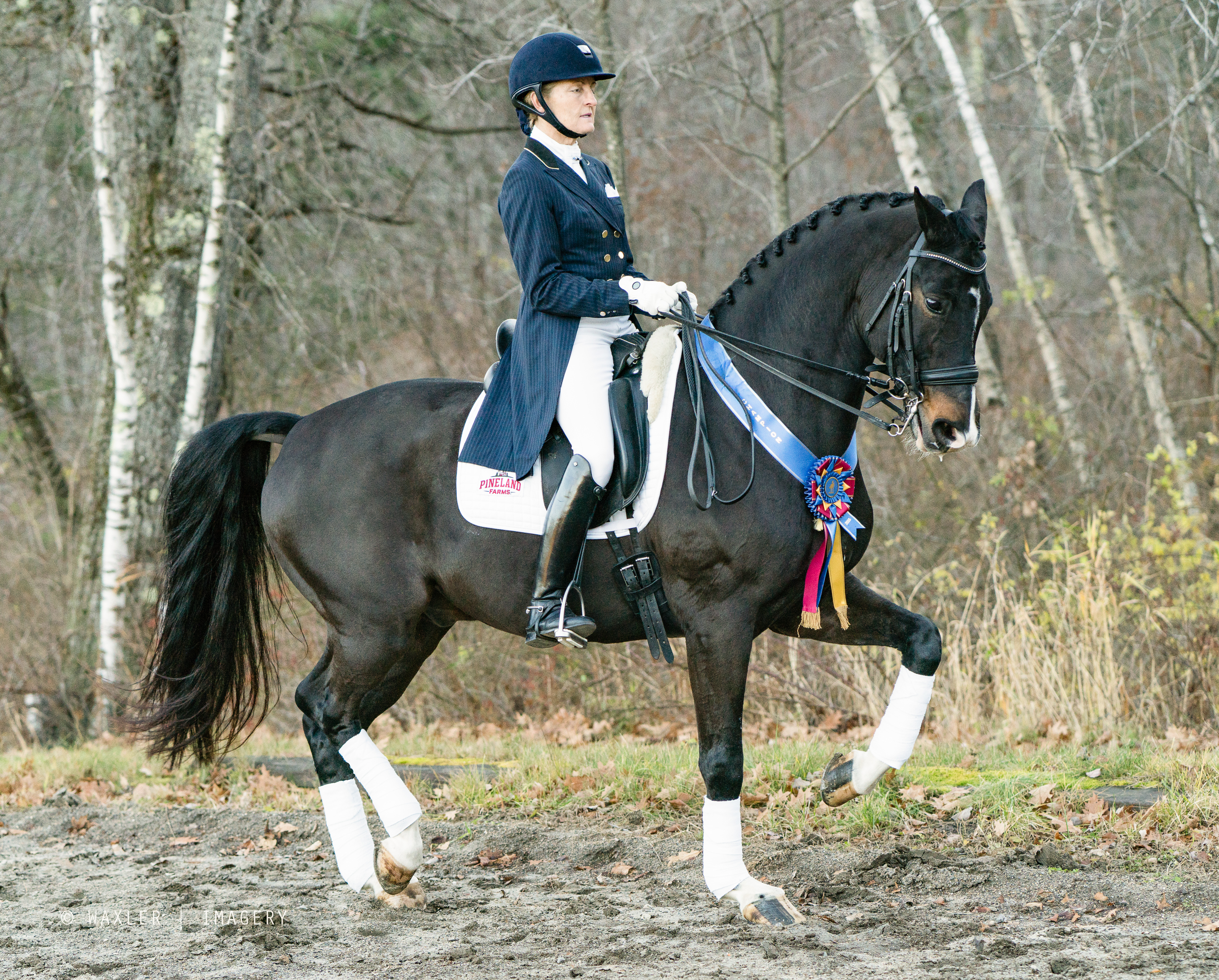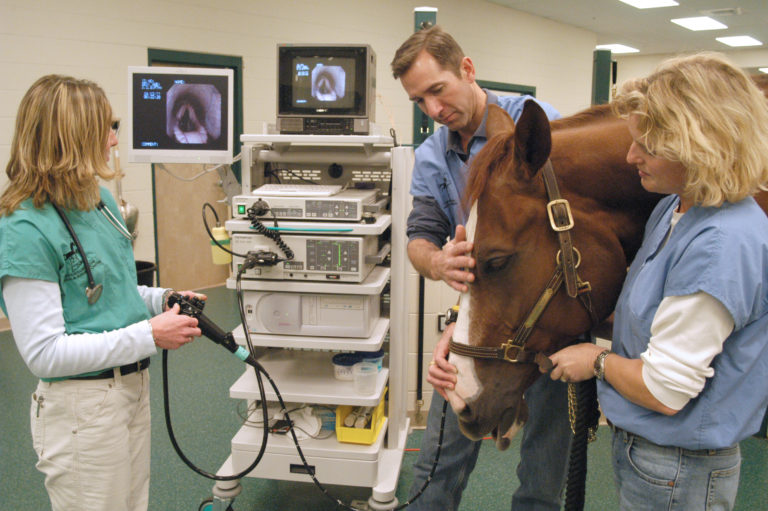Young and lower-level horses practice the basic transitions of walk–trot–walk and trot–canter–trot, the fundamental “big gears” they need to work on for their level of training. Upper-level horses know many more transitions, including the finer gears of canter–walk–canter, collected canter–pirouette–canter, piaffe, passage and so on. I like to think of the trot–canter–trot transitions as working on the big gears in the horse’s body.

(Andrea Waxler
)
These transitions, when done properly, keep the horse forward, loose and working through his body. The “big gears” refer to transitions that keep the fundamental quality of the walk, trot and canter. These qualities—rhythm, suppleness, contact—must be kept in the horse. I remind riders when working on the finer gears in the more advanced horse that if the horse gets tight or feels restricted in his body, going back to schooling the big gears can help restore the quality of the throughness and gaits.
Riding trot–canter–trot transitions is something I work on every day with horses of every level, especially in the warm-up. These transitions exercise your horse’s big gears, keep him through and forward and can help you find the ideal half halt.
Transitions for Throughness
You can feel how through the horse is or isn’t during the transitions from trot to canter to trot:
• Does he keep the rhythm in the gaits?
• Does he stay supple in the transition up and down?
• Does he change the connection?
• Does he change the balance?
You can use this information to ride the best possible transitions and help the horse step more through and feel more forward, supple and balanced. These transitions are critical to work on a lower-level horse because more practice helps you find more throughness. Upper-level horses need this work just as much. Remember, one of the last transitions in the Grand Prix is the canter–trot transition. That’s hard when you have all fine gears in the horse because sometimes the big gears don’t work as well without practice.
How to Ride the Transitions
These transitions can help you improve the throughness of your ride and allow you to perfect the half halt. I break the rider’s role down into three parts:
1. The first important aspect is the rider’s position, core posture and vertical alignment.
2. Secondly, you must understand the connection between the seat and elbows. The elbows are part of the seat and they connect the rein aid to the seat aid. Your elbows must be by your sides.
3. The third part is the leg and the correct length of stirrup. If the leg is too long or too short, your position changes negatively.
Feel as if you are sitting up tall with your core. You lift and stretch your diaphragm. At the same time, hug your elbows into your side. Keep your leg underneath you for support. From the sitting trot, ask the horse to canter with your inside leg forward at the girth and the outside leg back. If you remain stable in your position, the transition should be smooth and balanced.
To use your position in the downward transition, you will find that you don’t need to pull back. In the canter with the reins correctly adjusted, stretch up. The seat stays deep and connected while you imagine you grow taller in the front of your body, just under the breastbone. Then close your elbows toward your sides. The elbows make your core connect the rein and the seat aids, which produces a half halt and brings the horse into a more balanced position. Keep your inside leg connected with the horse at the girth, but release the outside leg a bit. This helps keep the horse under the rider and he should push forward in the trot so he doesn’t come downhill in the balance onto the shoulders. You should feel that you ride all your transitions with forward energy and understand that a downward transition has the same energy as the upward transition.
These transitions teach the horse and rider about how to use half halts. You can learn how to make an effective half halt by using your position and not just the reins. You should feel that you are bouncing the horse with your correct position and use of your elbows when you ride the transitions. Then the horse doesn’t have a chance to pull through your rein or seat aids, his back stays up and you can ride him forward.
Try This
You can ride the transitions from trot to canter to trot many times during the warm-up before you go on to ride other figures and movements. Begin on the 20-meter circle. The transitions will be better on the bending line with inside flexion because they should be more balanced. Ride plenty of changes of direction as well. The transitions themselves loosen the horse and get the muscles working well. In those transitions, spend time focusing on your position and the throughness of the horse. If you have these two qualities working, you are set up for success for the rest of your ride.
Sharon McCusker is a USDF gold medalist and former USET long-listed rider who has ridden with many top U.S. and European trainers. She was awarded The Dressage Foundation’s Carol Lavell Advanced Dressage Prize and used the grant to train in Germany with Hubertus Schmidt and compete successfully at Grand Prix while there. She has many national and regional titles and has been to five National Grand Prix Championships on horses she has trained. She owns and operates Souhegan Farm in Ashby, Massachusetts.











